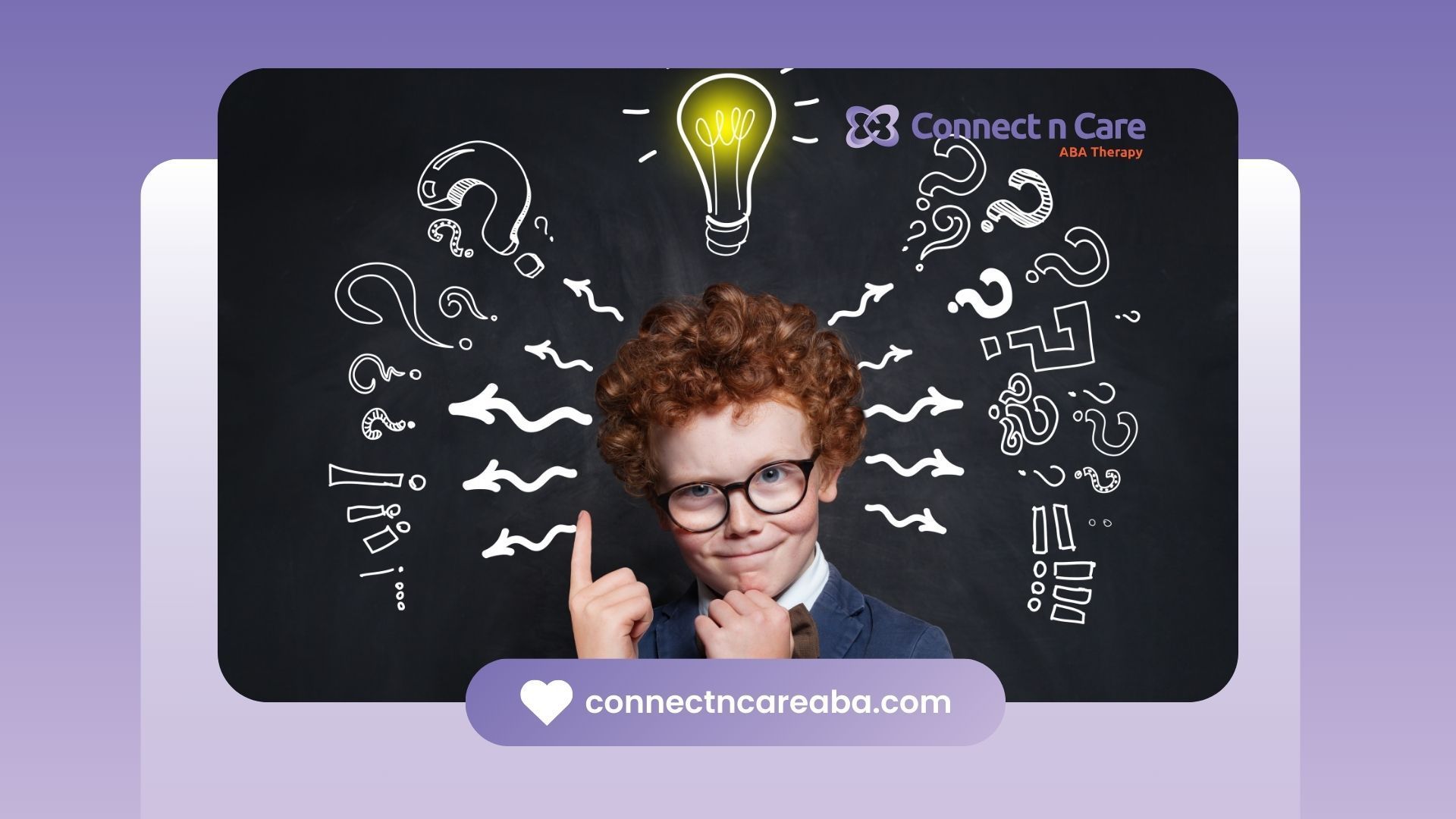ABA therapy is an effective intervention for managing the challenges of Autism Spectrum Disorder (ASD). Determining the ideal number of therapy hours is crucial to maximizing your child’s progress and achieving optimal outcomes, but it's not a one-size-fits-all answer. This comprehensive guide discusses the factors influencing ABA therapy duration and provides insights for parents seeking the most effective path for their child's development.
Exploring the Basics of ABA Therapy
Applied Behavior Analysis (ABA) therapy is a form of therapy rooted in the science of behavior analysis. It's designed to help individuals with autism develop new skills, reduce problem behaviors, and thrive in various settings.
At its core, ABA therapy involves breaking down complex skills into smaller, more manageable steps. By understanding the relationship between behavior and the environment, therapists can create individualized interventions that promote positive change. ABA therapy emphasizes positive reinforcement, using rewards and praise to motivate children and encourage desired behaviors.
Defining ABA and Its Core Principles
Applied behavior analysis, commonly known as ABA, is a scientifically validated approach that incorporates best practices with roots in behavior analysis. This therapy centers around the understanding that behaviors are learned and can be influenced through systematic interventions. Professionals use ABA therapy to address various challenges, with a particular focus on fostering positive behavioral changes in individuals with autism.
At the heart of ABA therapy lie several core principles. Individualized assessment and treatment planning are paramount. Every child is unique, and ABA therapy recognizes this by tailoring interventions to each child’s strengths, challenges, and individual needs.
Another fundamental principle of ABA is the use of positive reinforcement to shape desired behaviors. Instead of focusing on punishment, ABA therapists use rewards and encouragement to motivate children and increase the likelihood of positive behaviors recurring. This positive approach creates a supportive learning environment conducive to growth and development.
The Role of ABA in Autism Spectrum Disorder Treatment
ABA therapy is recognized as a highly effective intervention for individuals on the autism spectrum. Behavior analysts, the professionals trained in ABA principles, play a vital role in designing and implementing targeted interventions that address the core challenges often associated with autism spectrum disorders.
ABA therapists work closely with children to develop essential skills, including communication, social interaction, daily living skills, and academic readiness. They create structured learning environments that promote skill acquisition and generalization, helping children apply learned behaviors in different settings and various settings. Moreover, ABA therapy addresses maladaptive behaviors that may hinder a child's development.
By employing techniques like positive reinforcement, prompting, and shaping, therapists empower children with autism to navigate social situations, regulate their emotions, and engage in meaningful interactions with peers and adults. ABA therapy equips children with the tools they need to thrive in their homes, schools, and communities.
The Debate Around 10 Hours of ABA Therapy
The question of whether 10 hours of weekly ABA therapy is sufficient sparks significant discussion within the autism community. Some argue that it provides a manageable starting point, while others believe it falls short of what many children need to maximize their potential.
However, it's crucial to remember that ABA therapy is not one-size-fits-all. Ten hours per week might be adequate for some individuals, especially if they're addressing a specific behavior or skill deficit, while others require a more intensive approach.
Understanding the 10-Hour Therapy Model
A typical 10-hour ABA therapy model involves two or three sessions per week, each lasting a few hours. While this schedule might be appealing for families balancing therapy with other obligations, it's vital to consider the potential advantages and limitations of limited weekly hours.
One of the benefits of a 10-hour model is that it allows families to gradually introduce ABA therapy into their child’s routine. This approach can be less overwhelming than intensive interventions, particularly for younger children or those new to therapy. Additionally, 10 hours of ABA per week might be more manageable in terms of cost and scheduling flexibility, ultimately contributing to the best outcomes for the child.
However, it's crucial to recognize that a 10-hour ABA schedule might result in slower progress than more intensive interventions. Children receiving a limited number of therapy hours might need more time to achieve their goals and generalize skills across environments.
Pros and Cons of Limited Weekly Hours
While less intensive ABA therapy schedules offer flexibility and a more gradual approach, it's essential to weigh these benefits against potential drawbacks:
Benefits of Limited Weekly Hours
- Reduced scheduling demands: Fewer sessions might be easier to fit into busy family schedules.
- Gradual introduction to therapy: A slower pace can benefit younger children or those new to ABA therapy.
- Drawbacks of Limited Weekly Hours
- Slower progress: Fewer hours mean less time to address target behaviors and teach new skills.
- Challenges with generalization: Limited exposure to therapeutic interventions might hinder a child’s ability to transfer skills to different environments.
- Potential for regression: Consistent practice is crucial. Infrequent sessions might increase the risk of a child regressing on previously learned skills.
Tailoring ABA Therapy to Individual Needs
Recognizing that each child's journey with autism is different is paramount. The success of any ABA therapy plan hinges on its ability to cater to a child's unique needs, strengths, and areas for growth. A personalized approach is non-negotiable. This involves customizing everything from the therapy setting and intervention strategies to the specific goals addressed during sessions.
Assessing Your Child's Needs for ABA Therapy
Before determining the optimal number of ABA therapy hours for your child, a comprehensive assessment is crucial. This evaluation allows Board Certified Behavior Analysts (BCBAs) to understand your child’s individual needs and tailor a treatment plan accordingly.
A thorough ABA assessment delves into various aspects of your child’s functioning by observing their behavior in different environments. BCBAs also gather information through parent interviews, standardized assessments, and collaboration with other professionals involved in the child's care.
By gathering this comprehensive information, BCBAs gain a holistic understanding of a child's strengths, challenges, behaviors, and skill deficits, allowing them to develop an effective and personalized ABA therapy plan.
Strategies for Customizing Therapy Sessions
Beyond determining the appropriate number of therapy hours, personalizing ABA therapy involves creating sessions that cater to individual learning styles, preferences, and interests.
Here are some key strategies used in ABA therapy:
- Incorporating interests: Therapists often incorporate a child's favorite toys, games, or activities to keep them motivated and engaged.
- Adapting to learning styles: Some children thrive with visual aids, while others learn best through auditory or kinesthetic activities.
- Breaking down complex goals: To promote a child’s success, ABA therapists break down complex skills into smaller, more manageable steps, celebrating small victories along the way.
Furthermore, ongoing communication and collaboration between therapists, parents, and caregivers are crucial.
The Impact of Therapy Duration on Effectiveness
Research suggests a strong correlation between the intensity of ABA therapy and its effectiveness in improving outcomes for children with Autism Spectrum Disorder. More therapy hours generally lead to greater progress, particularly when starting early.
However, finding the right balance between intensity and individual needs is essential. It’s always best to consult with your child's BCBA to determine the optimal schedule for their specific needs and ensure the therapy aligns with your family's values and priorities.
Research Insights on ABA Therapy Hours
Numerous studies have examined the impact of ABA therapy hours on outcomes for children with autism. Research, including the landmark Lovaas study, indicates that children receiving 30-40 hours of ABA therapy per week demonstrate the most significant improvements in language development, social interactions, and adaptive behaviors.
While these findings highlight the benefits of intensive intervention, it’s vital to remember that the optimal number of ABA therapy hours varies based on individual needs, the child's age, and their response to therapy.
| Study | Duration of ABA Therapy | Key Findings |
|---|---|---|
| 1 | 30-40 hours per week | Significant improvements in language, social skills, and IQ. |
| 2 | 20-25 hours per week | Moderate improvements, particularly in communication skills. |
| 3 | 10-15 hours per week | Modest gains, often focusing on specific behaviors or skill deficits. |
Real-Life Success Stories of Different Therapy Intensities
Personal accounts from families who have navigated the world of ABA therapy offer valuable insights. Stories reveal that some children make remarkable progress with intensive therapy (30+ hours per week), achieving significant improvements in communication, social interactions, and daily living skills. These accounts often underscore the importance of early intervention.
On the other hand, some families find that a less intensive approach, such as 10-20 hours of therapy per week, better suits their child's needs and their family's lifestyle. They report notable improvements in specific areas, such as communication or reducing problem behaviors.
It’s crucial to remember that every child's journey is unique. These personal accounts highlight the importance of a flexible, individualized approach, regular communication with your BCBA, and adjustments to therapy hours based on your child's progress and evolving needs.
Enhancing ABA Therapy with Parental Involvement
Parental involvement is the cornerstone of successful ABA therapy. When parents actively participate in the process by learning about ABA principles, reinforcing learned behaviors consistently at home and generalizing skills, they create a supportive environment that fosters optimal progress.
This collaborative approach transforms therapy from isolated sessions into a lifestyle that permeates a child's daily experiences.
The Crucial Role of Families in ABA Success
Families play a crucial role in maximizing the effectiveness of ABA therapy. Firstly, being present during therapy sessions allows parents to gain a deeper understanding of the techniques and strategies their child's therapist uses. Knowledge empowers parents to replicate these interventions at home, fostering consistency and accelerating progress.
Secondly, family involvement extends beyond therapy sessions. By incorporating ABA principles and positive reinforcement into their daily routines and interactions, families create a supportive environment where children can continuously practice and generalize their newly acquired skills.
Furthermore, open communication between parents, therapists, and other caregivers is essential. When families and therapists work together as collaborative partners, they create a network of support and shared understanding, which significantly impacts the child's progress and overall well-being.
Tips for Parents to Support ABA Therapy at Home
Parental involvement doesn't require parents to become therapists themselves. Here are some simple yet effective ways parents can support their child's ABA therapy at home:
- Create visual schedules: Visual supports help children with autism understand routines and transitions more easily.
- Use positive reinforcement: Encourage desired behaviors using praise, rewards, and positive attention.
- Practice skills consistently: Help your child generalize what they learn in therapy by incorporating those skills into daily routines, like mealtimes, playtime, and bedtime.
Remember that consistency is key. The more you incorporate ABA strategies at home, the more natural they become for your child, leading to increased independence and progress over time.
Conclusion
ABA therapy is a valuable tool in supporting individuals with Autism Spectrum Disorder. While the debate around the effectiveness of 10 hours of ABA therapy continues, it's essential to tailor the therapy to meet individual needs. By assessing your child's requirements and customizing sessions, you can enhance the effectiveness of the therapy. Parental involvement plays a crucial role in the success of ABA therapy, so supporting therapy at home is beneficial. Remember, every child is unique, and therapy intensity may need adjustments based on progress.
At Connect N Care, we’re here to help every step of the way. Our dedicated team offers personalized ABA therapy services designed to fit your child’s strengths and challenges. Want to learn more? Reach out to us today to see how we can support your family on this journey!
Frequently Asked Questions
How do I determine if 10 hours of ABA is enough for my child?
The optimal number of therapy hours for your child with autism depends on their individual needs, specific behaviors, and response to ABA therapy. A thorough assessment by a qualified BCBA is essential in determining if 10 hours is sufficient or if adjustments to the duration of therapy are needed. Your child's progress should also be closely monitored to adjust for their needs.
Can the intensity of ABA sessions be adjusted based on progress?
Absolutely! ABA therapy is not a one-size-fits-all approach. Session intensity can be adjusted based on your child's progress, individual needs, emerging challenges, and the achievement of therapy goals. Maintaining a flexible schedule and open communication with your BCBA ensures the appropriate number of ABA hours are dedicated to maximizing your child's development.
What are the signs of effective ABA therapy?
Effective ABA therapy usually leads to noticeable positive changes in a child's behavior and skill development. Signs include: improvements in social interactions, communication skills, and a decrease in challenging behaviors. Additionally, you may observe the generalization of skills, with your child successfully applying what they've learned in various settings.









